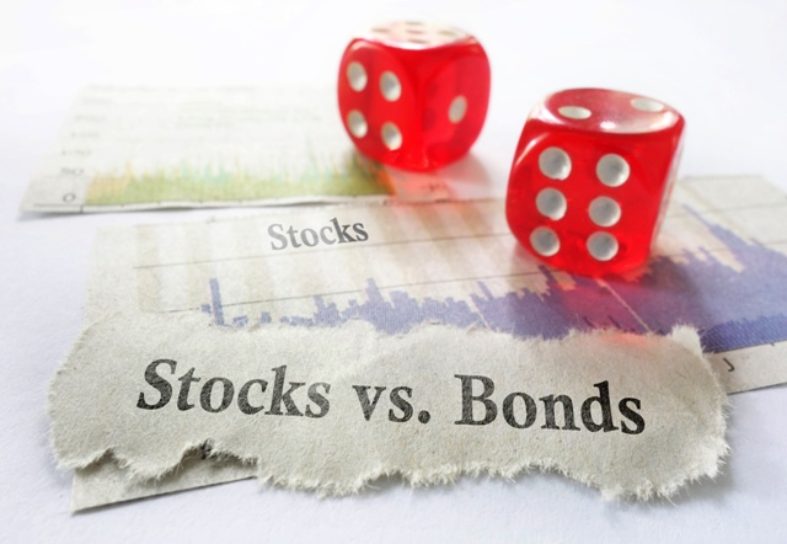Stocks and bonds, bonds and stocks. Anyone who glances over the finance section of a newspaper or tunes in to a financial news channel will mostly be confronted with discussions about these two different types of securities.
So what exactly is the difference between a stock and a bond? How do I invest?
Payment and Valuation
Bonds entitle the owner to a fixed stream of interest and principal payments. These payments are intended to be made regardless of how well or poorly the issuing organization is doing.
Therefore, the value of a bond is essentially the value of the fixed payments that the holder is entitled to, discounted by the time value of money and the likelihood of default on payment.
Stocks get their value from either an increase in the value of the share of the company that the holder owns or through a dividend payment that is issued by the company.
Neither of these are fixed, and shares can lose or gain value for a wide variety of reasons as the value of the underlying company rises and falls. Generally companies are valued based on their earning potential, but the relationship between earnings and share price is not always strictly fixed.
Ownership
Holders of stocks actually own a share of the company whose stock they are holding. This means that they can appoint board members and vote on important company issues on a pro rata basis.
Bondholders have no ownership of the issuing company. Although they can be consulted as stakeholders in a company, they do not have the same legal rights as stock owners.
Default and Bankruptcy
Bondholders are legally entitled to any collateral promised on the bond and priority over shareholders when it comes to restitution on defaulted bond payments or the liquidation of a defaulting company.
This means that bondholders are the first stakeholders to be made whole in the event of a bankruptcy, which offers a certain degree of protection on an investment.
Stockholders are only entitled to their share of whatever is left of the company after all other stakeholders have been made whole, which includes bondholders, vendors, employees, lending banks and more.
This can often only be a very small amount, if anything, and why the shares of a company can lose value at a significantly faster rate than most bonds.
Use and Returns
Generally speaking, bonds are seen as less risky while stocks are seen as more risky, though this is not always the case. Similarly, stocks are seen as offering greater potential returns than bonds in most cases.
This means that stocks and bonds tend to serve different purposes in a portfolio, and the combination of the two can actually compliment one another.
Stocks are used when the investor wants to make larger yet more uncertain long term gains, while bonds offer the investor a predictable source of lower returns.
When used together, the steady income of bonds can help offset the unreliability of stock income, while the higher returns from stocks can help to boost the lower returns seen from most bonds.



